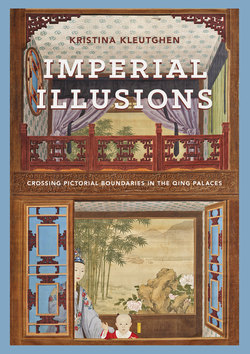Читать книгу Imperial Illusions - Kristina Kleutghen - Страница 95
На сайте Литреса книга снята с продажи.
Оглавление2.12 Detail of the full completed image produced by the “layer method.” From Nian Xiyao, The Study of Vision. The Bodleian Libraries, University of Oxford, Douce Chin. B. 2, p. 54v.
had ended, suggesting that one of these theaters appeared either in Beijing or at Huai’an sometime in between 1725 and The Study of Vision in 1735. It would certainly have been an appealing example of visual and pictorial illusionism as well as a useful tool for teaching how to demonstrate the depth cues that support illusionistic painting. However, nothing in either Nian’s commentary or the images themselves suggests that he understood what this object was, or that it was structurally related to a European theater and theater scenery. During this period in China, purpose-built theaters were only just beginning to be constructed, and dramatic performances did not employ large-scale painted scenery as in Europe.73 Furthermore, what Nian represented as the center of each overlapping layer is precisely the area of each perspective theater image sheet that is not illustrated. In the various layers of prints used in the miniature theaters, the central area was often left open to allow the viewer to see clearly through the various overlapping layers into the distance, which was depicted only on the card containing the vanishing point, inserted in the last slot in the box. In misreading the perspective theater as part of his investigation of spatial recession,74 Nian not only
